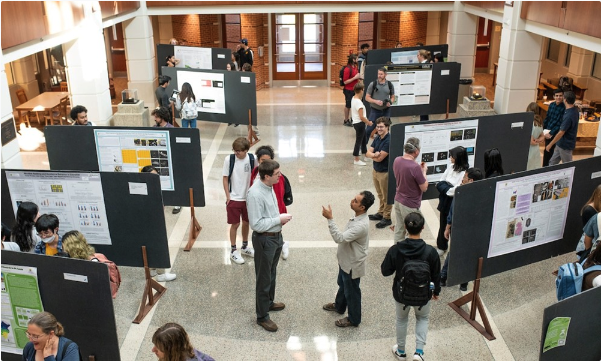Document Type
Poster
Publication Date
Fall 10-2020
Abstract
Our goals this summer were to build on previous work in our group modeling ultra-high vibrational and rotational excitation in small molecules via unique pulse sequencing of an infrared (IR) laser. The system was modeled both using Fortran and Mathematica as programming languages. We were able to demonstrate that different numerical techniques for propagating coupled differential equations forward in time led to equivalent levels of vibrational excitation and allowed for identical visualization of molecular state probabilities as a function of time. Work including the rotational motion progressed to the point of being able to see both significant excitation when rotations are included as well as leaking into neighboring rotational states as expected. Much work remains to be done before a full analysis of the rotational excitation can be completed.
Recommended Citation
Tucker, Toria; Ling, Jingwei (Mike); and Gourley, Bridget, "Ultra-high vibrational and rotational motion of the HF molecule via Infrared (IR) laser excitation" (2020). Annual Student Research Poster Session
. 37, Scholarly and Creative Work from DePauw University.
https://scholarship.depauw.edu/srfposters/37









Comments
Toria Tucker; Jingwei (Mike) Ling; and Bridget L. Gourley, PhD
Department of Chemistry and Biochemistry, DePauw University, Greencastle, IN
Supported by: DePauw University Science Research Fellows Program and Faculty Development Committee